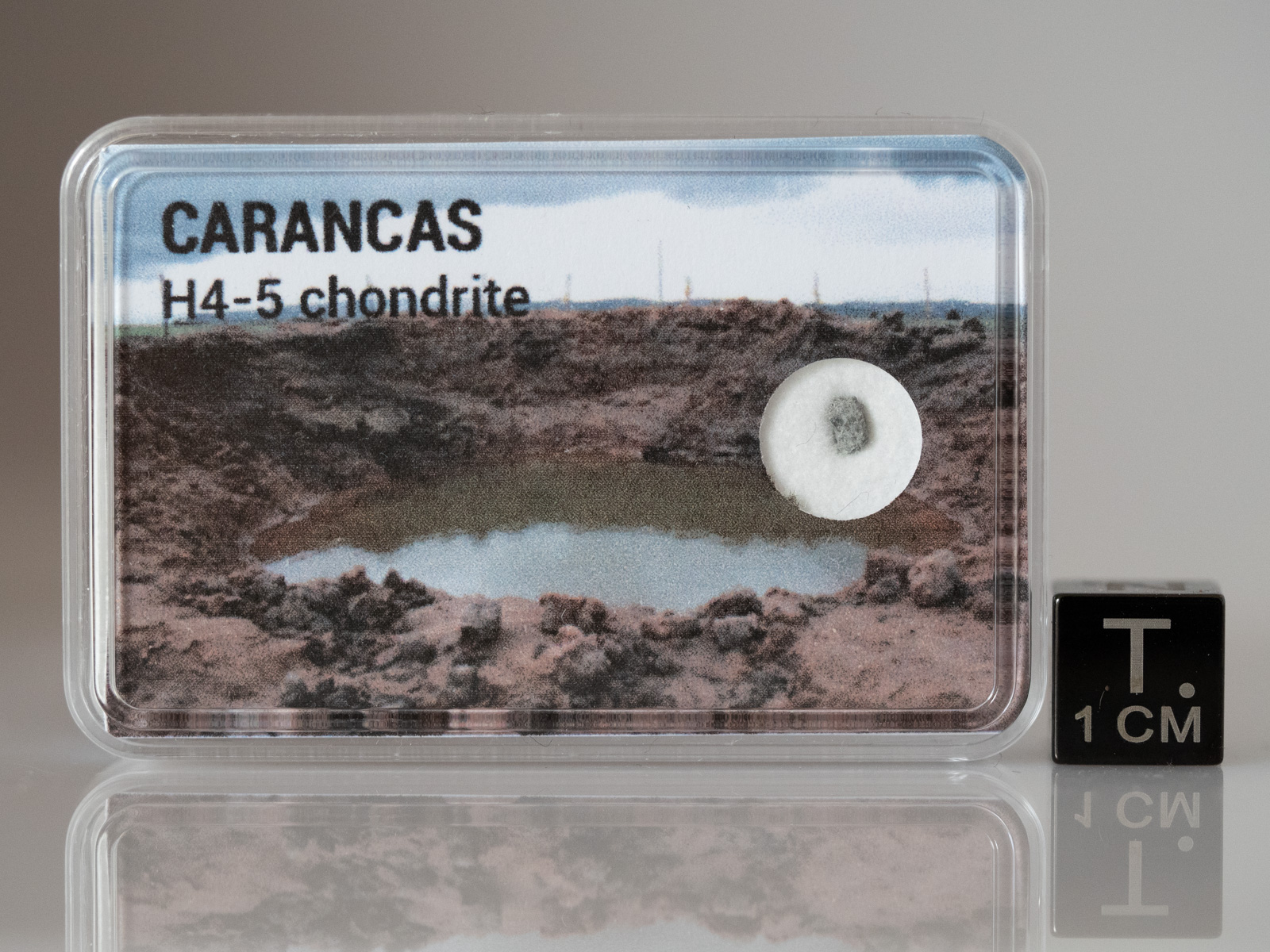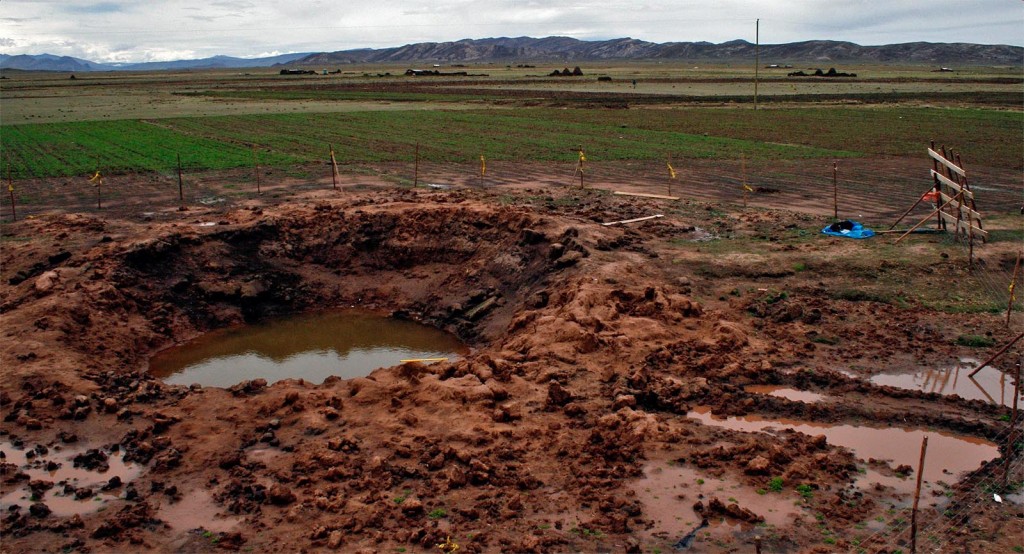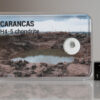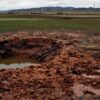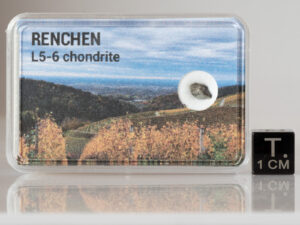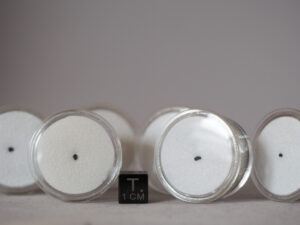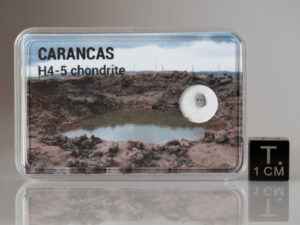Description
Carancas 16°39’52”S, 69°02’38”W
Carancas, Chucuito, Puno, Peru
Fall: 15 September 2007, ~16: 45 UTC
Ordinary chondrite (H4-5)
History: A large fireball was witnessed to impact near the community of Carancas, in the province of Chucuito, region of Puno in the country of Peru. It made a sizable impact crater, ~13.8 m in diameter (INGEMMET) or 11-12 m (L. Jackson, CGS). Local residents and many others have recovered numerous pieces of the impactor from the sides of the crater and the surrounding area. Mike Farmer brought several samples to the Lunar and Planetary Laboratory of the UAz for classification on October 5, 2007. The total mass is currently unknown. A preliminary report was published on the web by F. Luisa Macedo and O. José Macharé of INGEMMET, Peru.
Physical characteristics: Most specimens are without fusion crust and have a gray color with some metal and chondrules visible, although the chondrules are not easily observed. At least one specimen had two different lithologies, the second white in color, indicating it is a breccia. Numerous black shock veins, often on more than one face of a specimen, were observed. At least one large (~2 cm) metal grain was also recovered, with a thin layer of stone attached to it.
Petrography: (H. Connolly, KCCU, UAz; D. Hill, UAz, D. Schrader, UAz, K. Domanik, UAz, and D. Lauretta, UAz). One polished butt and one thin section, of two different samples, were examined. The polished butt contains some relict chondrules with well-defined margins and many textural types present. The thin section shows the rock to have experienced extensive recrystallization of the matrix with few relict chondrules present. Relict chondrules range in size from ~170 µm to 1 mm. Olivine and orthopyroxene were observed with abundant Fe, Ni-metal and Fe-rich sulfide.
Mineral compositions: Olivine (Fa18.4±0.5) and pyroxene (Fs16.1±0.2). Oxygen isotopes: (R. Greenwood, OU; two analyses) δ17O = 3.017, 2.942; δ 18O = 4.519, 4.344; Δ17O = 0.667, 0.683 (all ‰).
Classification: Ordinary chondrite (H4-5); W0, S3.
Type specimens: A total of 22 g, including 5 thin sections, are on deposit at UAz. MFarmer holds 320 g.
Submitted by: Harold C. Connolly Jr., KCCU and UAz.

